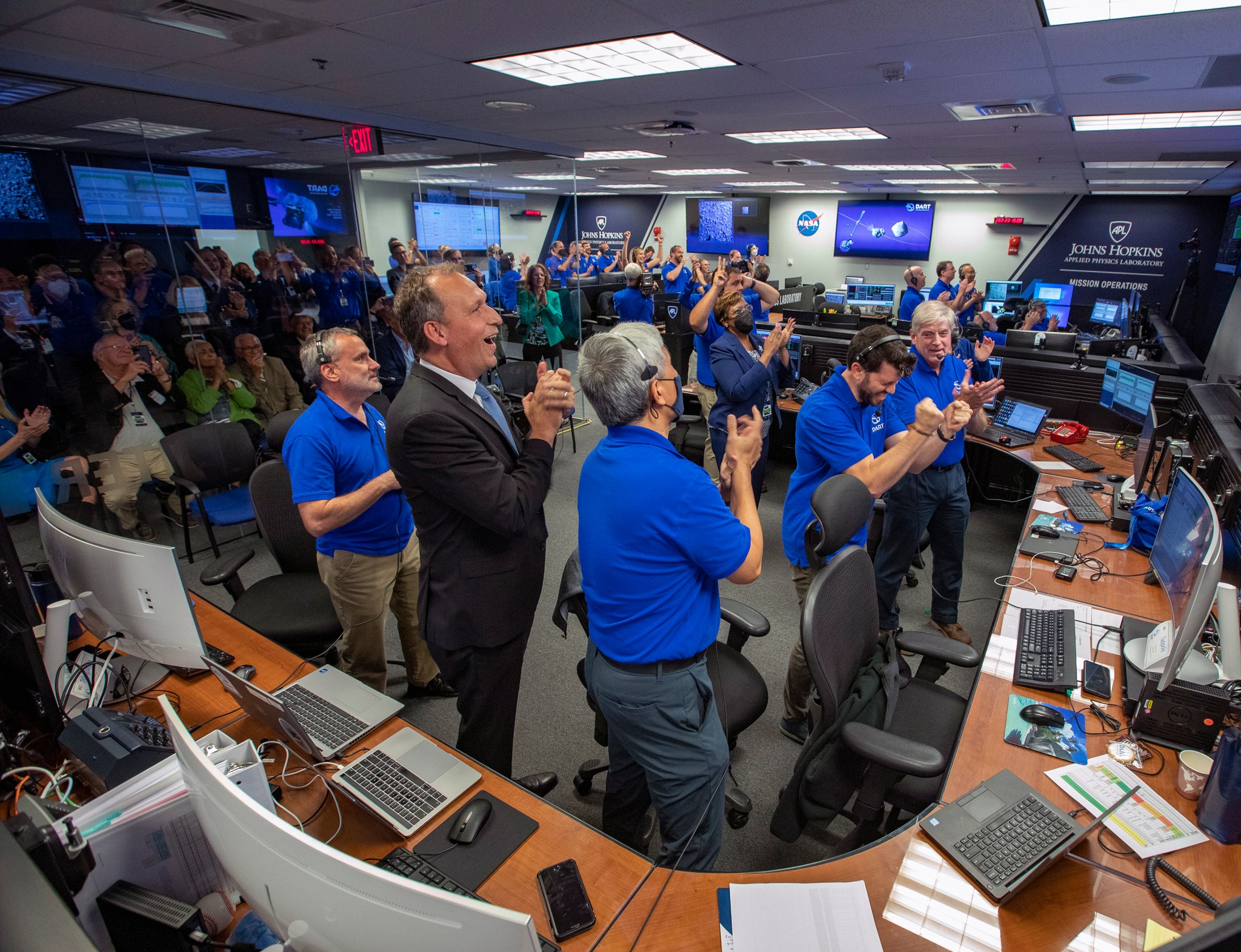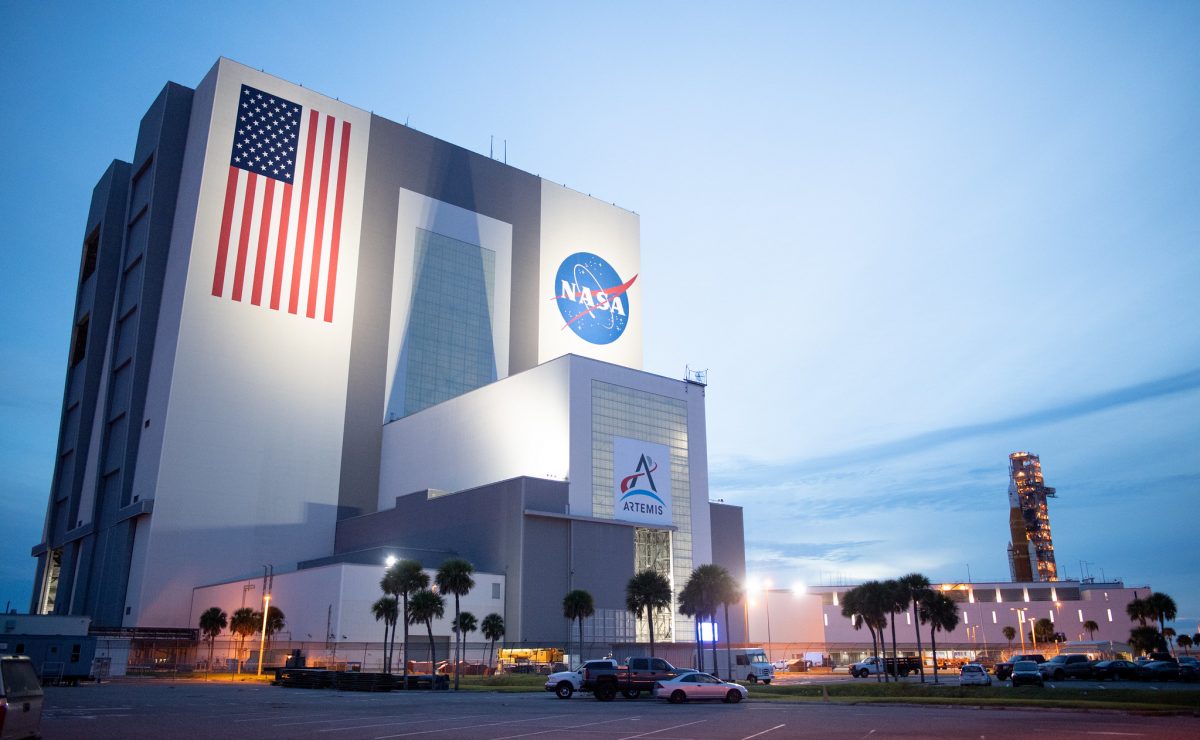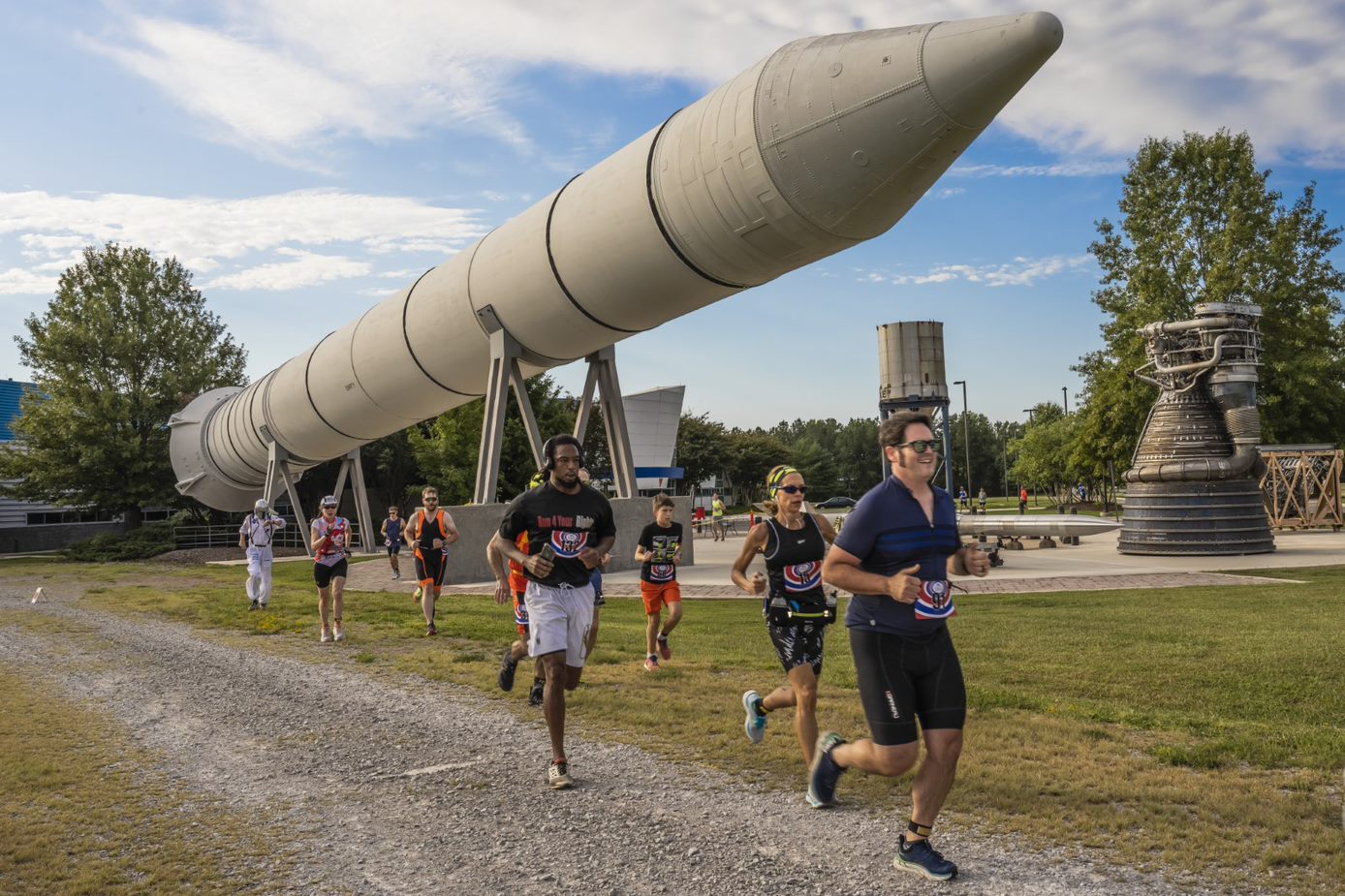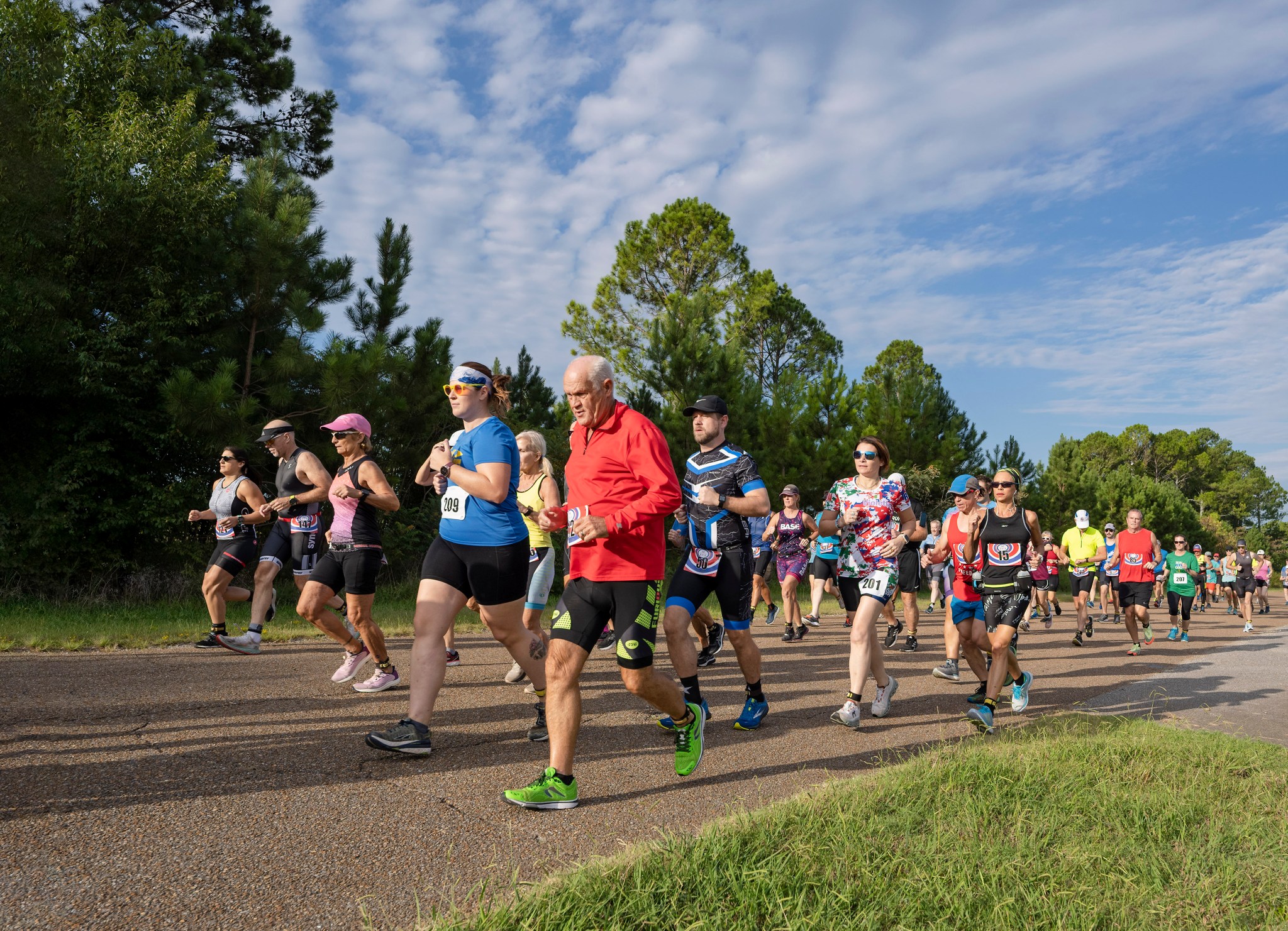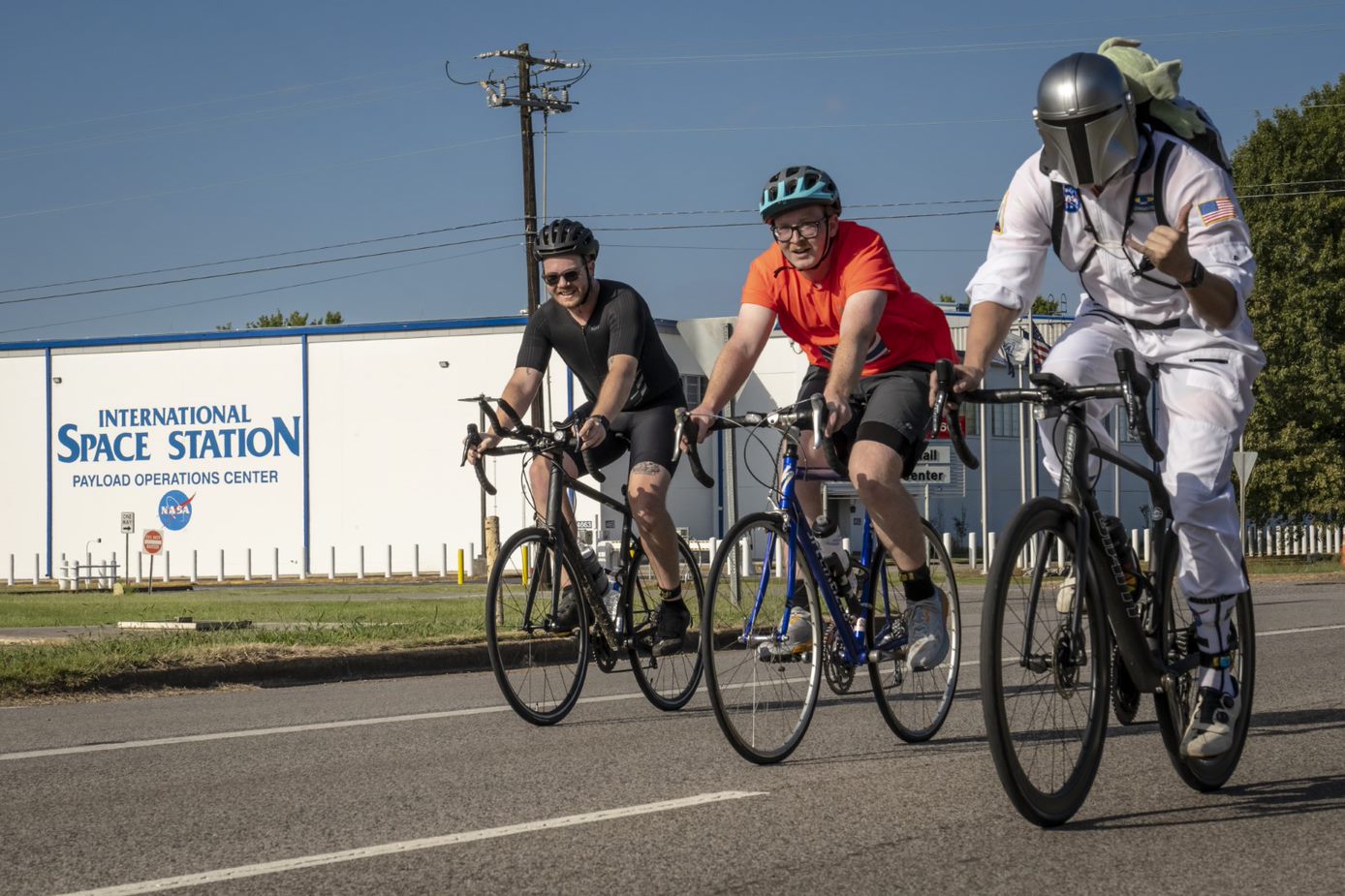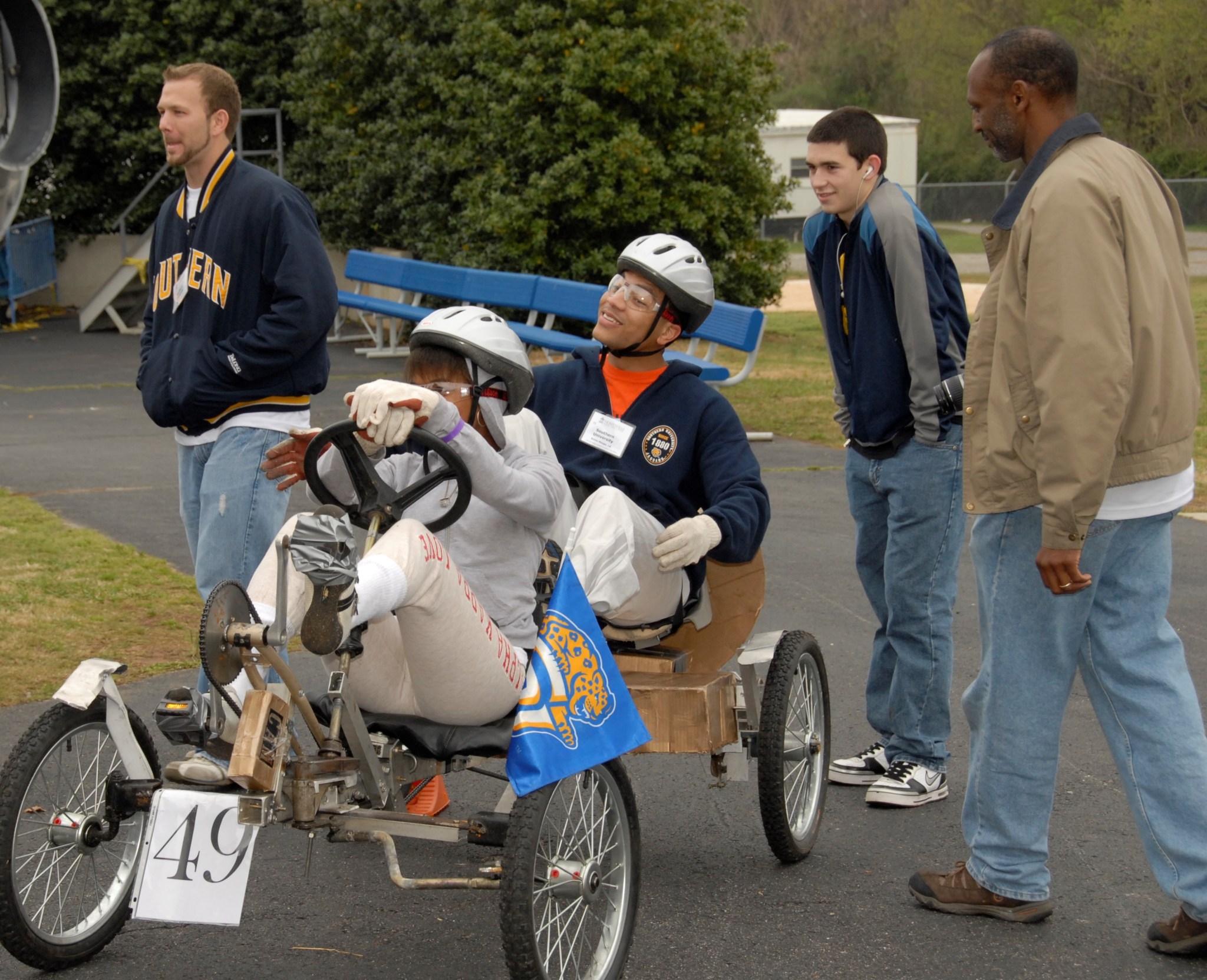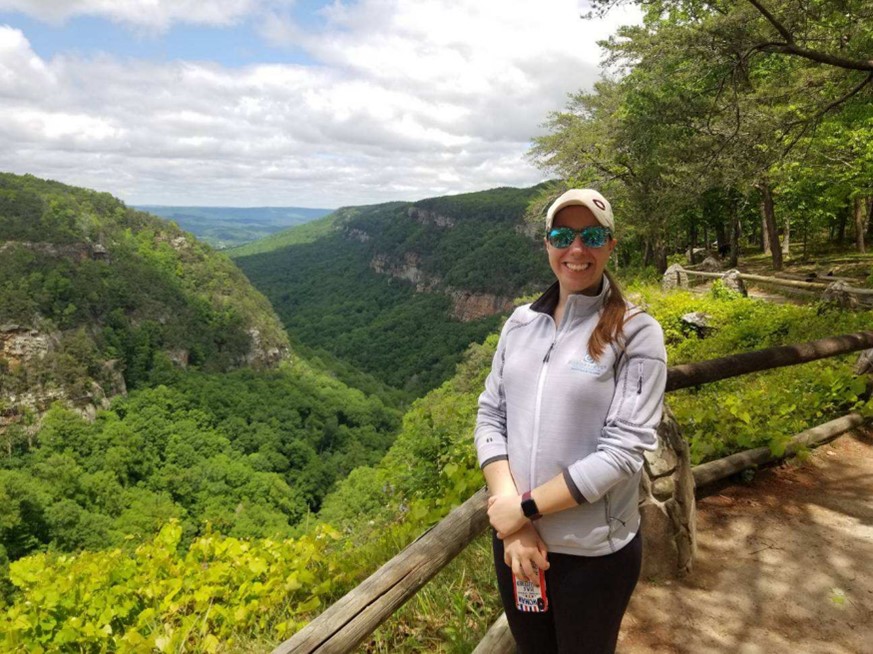In This Week’s Star
- DART Mission Hits Asteroid in First-Ever Planetary Defense Test
- NASA’s Moon Rocket and Spacecraft Arrive at Vehicle Assembly Building
- Hispanic Heritage Month: Marshall Combustion Devices Engineer Marissa Garcia
- Participants ‘Race’ the International Space Station in Marshall Duathlon
- Human Exploration Rover Challenge Propels Students Toward NASA Careers
- Lightning Scientist Sarah Bang’s Childhood Fear Turned into a Career
- NASA Adjusts Crew-5 Launch Date Due to Hurricane Ian
- Webb Images of Neptune, Mars Highlighted on ‘This Week at NASA’
DART Mission Hits Asteroid in First-Ever Planetary Defense Test
After 10 months flying in space, NASA’s Double Asteroid Redirection Test (DART) – the world’s first planetary defense technology demonstration – successfully impacted its asteroid target Sept. 26, the agency’s first attempt to move an asteroid in space.
Mission control at the Johns Hopkins Applied Physics Laboratory (APL) in Laurel, Maryland, announced the successful impact at 6:14 p.m. CDT.
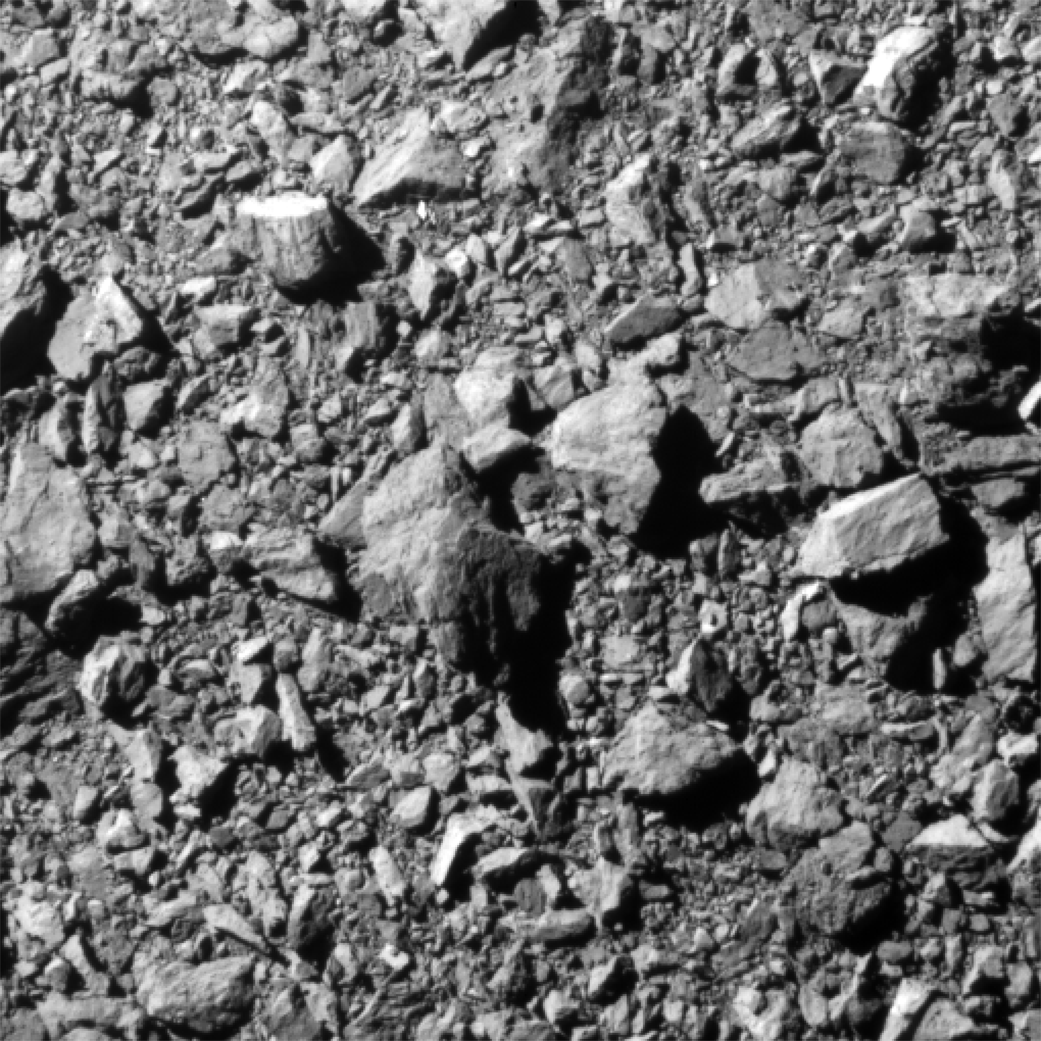
As a part of NASA’s overall planetary defense strategy, DART’s impact with the asteroid Dimorphos demonstrates a viable mitigation technique for protecting the planet from an Earth-bound asteroid or comet, if one were discovered.
“At its core, DART represents an unprecedented success for planetary defense, but it is also a mission of unity with a real benefit for all humanity,” said NASA Administrator Bill Nelson. “As NASA studies the cosmos and our home planet, we’re also working to protect that home, and this international collaboration turned science fiction into science fact, demonstrating one way to protect Earth.”
DART targeted the asteroid moonlet Dimorphos, a small body just 530 feet in diameter. It orbits a larger, 2,560-foot asteroid called Didymos. Neither asteroid poses a threat to Earth.
The mission’s one-way trip confirmed NASA can successfully navigate a spacecraft to intentionally collide with an asteroid to deflect it, a technique known as kinetic impact.
The investigation team will now observe Dimorphos using ground-based telescopes to confirm that DART’s impact altered the asteroid’s orbit around Didymos. Researchers expect the impact to shorten Dimorphos’ orbit by about 1%, or roughly 10 minutes; precisely measuring how much the asteroid was deflected is one of the primary purposes of the full-scale test.
“Planetary Defense is a globally unifying effort that affects everyone living on Earth,” said Thomas Zurbuchen, associate administrator for the Science Mission Directorate at NASA Headquarters in Washington. “Now we know we can aim a spacecraft with the precision needed to impact even a small body in space. Just a small change in its speed is all we need to make a significant difference in the path an asteroid travels.”
The spacecraft’s sole instrument, the Didymos Reconnaissance and Asteroid Camera for Optical navigation (DRACO), together with a sophisticated guidance, navigation and control system that works in tandem with Small-body Maneuvering Autonomous Real Time Navigation (SMART Nav) algorithms, enabled DART to identify and distinguish between the two asteroids, targeting the smaller body.
These systems guided the 1,260-pound box-shaped spacecraft through the final 56,000 miles of space into Dimorphos, intentionally crashing into it at roughly 14,000 miles per hour to slightly slow the asteroid’s orbital speed. DRACO’s final images, obtained by the spacecraft seconds before impact, revealed the surface of Dimorphos in close-up detail.
Fifteen days before impact, DART’s CubeSat companion Light Italian CubeSat for Imaging of Asteroids (LICIACube), provided by the Italian Space Agency, deployed from the spacecraft to capture images of DART’s impact and of the asteroid’s resulting cloud of ejected matter. In tandem with the images returned by DRACO, LICIACube’s images are intended to provide a view of the collision’s effects to help researchers better characterize the effectiveness of kinetic impact in deflecting an asteroid. Because LICIACube doesn’t carry a large antenna, images will be downlinked to Earth one by one in the coming weeks.
“DART’s success provides a significant addition to the essential toolbox we must have to protect Earth from a devastating impact by an asteroid,” said Lindley Johnson, NASA’s Planetary Defense Officer. “This demonstrates we are no longer powerless to prevent this type of natural disaster. Coupled with enhanced capabilities to accelerate finding the remaining hazardous asteroid population by our next Planetary Defense mission, the Near-Earth Object (NEO) Surveyor, a DART successor could provide what we need to save the day.”
With the asteroid pair within 7 million miles of Earth, a global team is using dozens of telescopes stationed around the world and in space to observe the asteroid system. Over the coming weeks, they will characterize the ejecta produced and precisely measure Dimorphos’ orbital change to determine how effectively DART deflected the asteroid. The results will help validate and improve scientific computer models critical to predicting the effectiveness of this technique as a reliable method for asteroid deflection.
“This first-of-its-kind mission required incredible preparation and precision, and the team exceeded expectations on all counts,” said APL Director Ralph Semmel. “Beyond the truly exciting success of the technology demonstration, capabilities based on DART could one day be used to change the course of an asteroid to protect our planet and preserve life on Earth as we know it.”
Roughly four years from now, the European Space Agency’s Hera project will conduct detailed surveys of both Dimorphos and Didymos, with a particular focus on the crater left by DART’s collision and a precise measurement of Dimorphos’ mass.
Johns Hopkins APL manages the DART mission for NASA’s Planetary Defense Coordination Office as a project of the agency’s Planetary Missions Program Office, which is at NASA’s Marshall Space Flight Center.
To see the final images before DART’s impact, visit here.
NASA’s Moon Rocket and Spacecraft Arrive at Vehicle Assembly Building
At approximately 9:15 a.m. EDT Sept. 27, NASA’s Space Launch System (SLS) rocket and Orion spacecraft for the Artemis I mission were secured inside the Vehicle Assembly Building at the agency’s Kennedy Space Center after a four-mile journey from Launch Pad 39B that began at 11:21 p.m. Sept. 26 ahead of the arrival of Hurricane Ian.
At approximately 11:45 a.m., a fire alarm was triggered in the Vehicle Assembly Building. The notification came when an arc flash event occurred at a connector on an electrical panel in High Bay 3. A spark landed on a rope marking the boundary of the work area. The rope began to smolder, workers pulled the alarm, and employees evacuated the building safely.
The incident occurred on the third floor of F-tower at the Mobile Launcher power connection. Technicians shut down power to the panel, and the center’s emergency responders declared the VAB safe for employees to return to work. There were no reported injuries, and the Artemis I rocket and spacecraft were not at risk.
After the storm has passed, teams will conduct inspections to determine impacts to Kennedy and establish a forward plan for the next launch attempt, including replacing the core stage flight termination system batteries and retesting the system to ensure it can terminate the flight if necessary for public safety in the event of an emergency during launch.
Check the Artemis I blog for updates. Artemis I is the first integrated flight test of the Space Launch System (SLS) rocket and Orion spacecraft beyond the Moon. NASA’s Marshall Space Flight Center is responsible for the design, development, testing, and manufacturing of the rocket.
Hispanic Heritage Month: Marshall Combustion Devices Engineer Marissa Garcia
Each year, NASA celebrates Hispanic Heritage Month, highlighting the importance of the culture, traditions, and contributions of its workforce whose roots are from Spain, Mexico, the Caribbean, Central America, and parts of South America. The theme of this year’s observance is “Unidos: Inclusivity for a Stronger Nation.”
Marissa Garcia, a combustion devices engineer working in the propulsion department at NASA’s Marshall Space Flight Center, shares her journey to Marshall, and what this month of celebration means to her. Garcia joined the Marshall team after completing a Pathways Internship.
Name: Marissa Garcia
Title: Combustion devices engineer
My role at NASA: I work in the propulsion department at Marshall. I am actively engaged in the manufacturing and testing of combustion chambers for NASA, including the Space Launch System RS-25 engine and the Rapid Analysis and Manufacturing Propulsion Technology (RAMPT) project.
Years at NASA: I’ve been with NASA for four years. I was a Pathways intern for two years and have been a full-time employee for two years.
Hometown: El Paso, Texas
My career path to NASA: My career path started when I was an undergraduate student at The University of Texas at El Paso. I worked as an undergraduate research assistant in the Aerospace Center (formerly the Center for Space Exploration Technology Research). We had a mentoring partnership with NASA’s Johnson Space Center in Houston, and I had the opportunity to intern at Johnson in 2017. Being a part of the NASA culture through this internship led me to apply for a Pathways internship. In 2018, I was selected to intern at Marshall and completed three rotations. After completing my graduate degree in 2019, Marshall offered me a full-time position.
Some of the people who have influenced my life and career: I wouldn’t be the woman I am today without my parents’ love and guidance. Some of my fellow Marshall team members have also offered me guidance: Zenia Garcia and Chance Garcia have been major influences in my life and career. We have the same last name, but we are not related. They created a safe place for me here in Huntsville, which made moving away from home easier. They are both my friends and mentors.
Why I choose to do what I do: I chose to pursue an education in mechanical engineering because of the flexibility the degree offers. This was important, because when I was selecting a major, the U.S. was just coming out of an economic recession. I wanted to earn a degree that would allow me to pivot as needed throughout my career. Now, I am an aerospace engineer and work as a combustion devices engineer.
What are some of your favorite memories or traditions to reflect on while celebrating Hispanic Heritage Month?
I remember attending kermes (like a bazaar or church fair). Kermes were fundraising events hosted by the various Catholic churches in the community. At these events we played games like loteria, listened to music, and, of course, enjoyed delicious, homemade Mexican food! Loteria was probably my favorite part. It’s basically Mexican bingo, except with beautiful images on the cards rather than numbers. I would always play with my mom and grandma. For me, winning was less important than the family time and memories loteria created.
Participants ‘Race’ the International Space Station in Marshall Duathlon
Participants make their way through the Racin’ the Station Duathlon course on Sept. 24 at NASA’s Marshall Space Flight Center and Redstone Arsenal. Marshall hosted the 10th annual duathlon – a run/bike/run event where participants “race” the International Space Station as it completes one Earth orbit. Approximately 150 athletes competed to finish the race before the amount of time it takes the space station, which travels about 17,000 mph, to complete one circuit around Earth – a little over 90 minutes. The event is organized by the Team Rocket Triathlon Club in Huntsville and by the Marshall Association, a professional employee service organization at Marshall whose members include civil servants, contractors, and retirees. Go here to see all results and here to see more photos from the event. (NASA/Mick Speer/Charles Beason)
Human Exploration Rover Challenge Propels Students Toward NASA Careers
By Wayne Smith
For many students, participating in NASA’s Human Exploration Rover Challenge (HERC) steers them toward a career in the aerospace industry, including working with NASA. That’s the case for Nick Benjamin and Mike Selby, two employees at NASA’s Marshall Space Flight Center who followed their rover path to a rewarding NASA career.
For nearly 30 years, HERC has provided student competitors with an opportunity to design, build, and test a vehicle that could navigate the surface of the Moon, Mars, or other planetary bodies. The annual challenge and its sponsors encourage students across the United States and around the world to push the limits of innovation to imagine what it may take to explore deep space destinations.
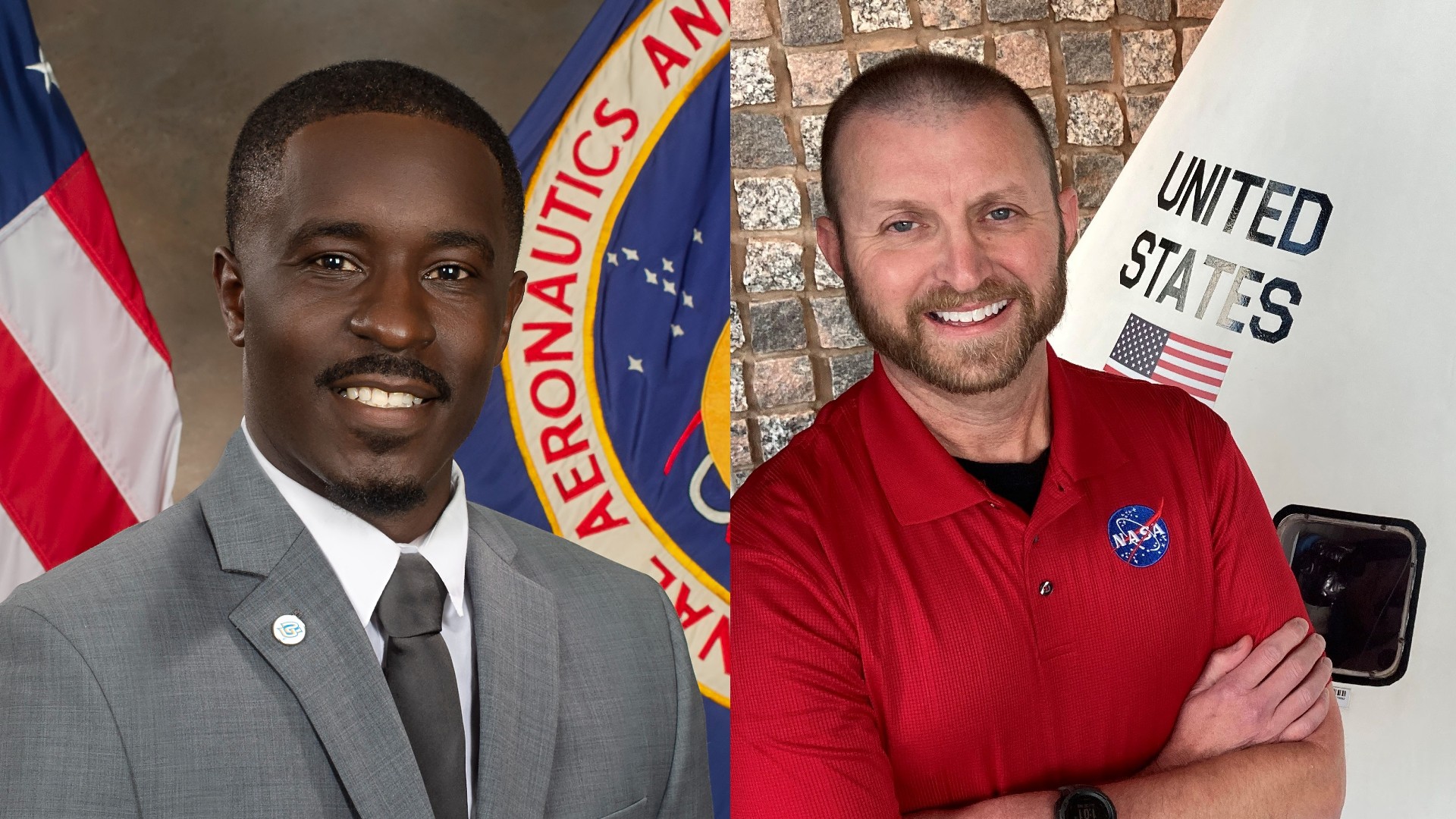
Both Benjamin and Selby agree HERC broadened their knowledge of problem solving, collaboration, networking, and other skills needed in the 21st century workplace.
“I enjoyed how our team used NASA guidelines to build a vehicle which met such challenging specifications,” said Benjamin, a 14-year NASA employee and current Payload Operations Director. “HERC steers students toward the mindset of how NASA engineers and scientists approach design and development in order to solve challenging problems.”
In his current role, Benjamin manages and directs scientific operations aboard the International Space Station. He also co-chairs Marshall’s African American employee resource group, sharing NASA mission messaging through recruiting efforts to serve African American students from Historically Black Colleges and Universities.
While a senior at Southern University in Baton Rouge, Louisiana, Benjamin participated in HERC as part of his senior design project. Benjamin spoke with a NASA recruiter before competing, not knowing he would one day call North Alabama home.
“It was our school’s second year competing in HERC and it was rewarding to watch our rover traverse and complete the difficult obstacle course,” Benjamin said. “It was a great experience to cap off my college career, and I immediately fell in love with NASA and the Huntsville area.”
As for Mike Selby, he competed in 1995 and 1996 while studying at the University of Alabama in Huntsville. Selby said participating in HERC galvanized his desire to pursue a career with NASA.
“The nine-month-long experience was enriching as we identified which students were suited for particular tasks, all while working within a strict budget and schedule,” Selby said. “HERC and other NASA challenges provide great opportunities for students to contribute toward NASA’s work in exploration and discovery.”
Prior to his current role as a mission manager in the Planetary Missions Office, Selby worked for nearly 25 years in the center’s engineering directorate. And just like Benjamin, Selby agrees he gained valuable skills designing, building, and competing with his HERC teammates.
Selby’s team won HERC in 1996 – one year after finishing second. Selby recalled strong thunderstorms delayed the event, which allowed his team time to make last-minute adjustments to their rover design. “Once finished, we quickly drove our rover to the event while other team members completed the on-site registration process,” Selby said. “Our team was convinced the weather delay helped us win HERC that year.”
In its third year as an Artemis Student Challenge, HERC draws inspiration from the Apollo and Artemis missions, emphasizing designing, constructing, and testing technologies, and traversing in unique environmental terrains. The competition reflects the goals of the Artemis program, which seeks to put the first woman and first person of color on the Moon.
The HERC challenge is managed by NASA’s Southeast Regional Office of STEM Engagement at Marshall. NASA’s Office of STEM Engagement uses challenges and competitions to further the agency’s goal of encouraging students to pursue degrees and careers in science, technology, engineering, and mathematics.
Smith, a Media Fusion employee, supports Marshall’s Office of Strategic Analysis & Communications.
Lightning Scientist Sarah Bang’s Childhood Fear Turned into a Career
(This is the second in a series of profiles on early career scientists in the Earth Science Branch at NASA’s Marshall Space Flight Center.)
By Dauna Coulter
“I’m Sarah Bang, lightning scientist,” this 33-year-old announces with a grin, clearly relishing the irony. She’s a remote sensing scientist at NASA’s Marshall Space Flight Center specializing in lightning and hail detection from the vantage point of Earth observation satellites.
It all started with a childhood terror of thunderstorms.
“The sound of thunder would send me running for flashlights, which I distributed to my sister and my parents while giving them a safety briefing,” Bang explains.
Tired of the safety briefings, her father assured her she didn’t need to worry about every clap of thunder because “weather people” would provide plenty of warning time and tell the public when they need to take shelter.
“After that, I used to call the local ‘weather people’ with questions, and with the advent of the internet, I could follow storms on radar online,” she says. “What I feared became more of a hobby. I would put off my studies to watch thunderstorms.”
Bang was born and raised in Buffalo, New York. When she attended the University of Chicago for her undergraduate studies, she was at first a chemistry major. That soon changed. One day her adviser asked her about her goals.
“I heard myself say, ‘I want to go into research in inorganic chemistry,’” Bang explains. “As I uttered that, I knew it was a lie. I had a lightbulb moment – instead of putting off homework to watch the weather, I could study meteorology, and then it would be my homework to watch the weather.”
She switched majors to geophysical science, specializing in fluid dynamics. After earning her bachelor’s degree, she earned master’s in atmospheric science at the University of Utah.
A road trip cemented her decision to pursue a doctorate in weather research.
“I was in the first year of my master’s program and had been dwelling on how difficult the program was and whether I could continue past the master’s degree,” she says. “On a road trip from Oklahoma to Wisconsin with a friend, we traveled through Joplin, Missouri, a few days after the deadly May 22, 2011, tornado. I was heartbroken by the devastation I saw, and it hit me that this is my calling – the kind of work I must do. If I can contribute in some way to the research on severe storms, I owe it to storm victims to devote my skills and energy to help.”
Bang completed her doctorate in atmospheric science from the University of Utah in 2018. She was a fellow in the NASA Postdoctoral Program at Marshall from 2018 to 2020, focusing on the detection of severe hailstorms using spaceborne passive microwave instruments. Then she joined Marshall’s Earth Science Branch in 2020, where she continues her research on using spaceborne instruments to observe severe weather phenomena, in particular lightning but also severe hail.
Shortly after moving to Huntsville, her Buffalo accent caused some confusion when a native Alabamian co-worker asked her what she studied.
“I work in hail,” Bang responded.
“Is it that bad?” asked the co-worker, with great concern. Bang had to clarify that she studied severe weather.
Asked for one word she would use to describe herself, Bang responds with “ebullient.”
“In the past I was chastised for being bubbly,” she says. “Some people seemed to think scientists are only reserved and terse, and that there wasn’t space for someone like me.”
How does she think others would describe her?
“Well, I overheard a little boy at church say, ‘Sarah Bang is loud.’”
Bang!
Coulter, a Media Fusion employee, supports Marshall’s Office of Strategic Analysis & Communications.
NASA Adjusts Crew-5 Launch Date Due to Hurricane Ian
NASA and SpaceX are targeting no earlier than 11:23 p.m. CDT Tuesday, Oct. 4, for the launch of the agency’s Crew-5 mission to the International Space Station with a backup opportunity Oct. 5.
Mission teams will continue to monitor the impacts of Ian on the Space Coast and NASA’s Kennedy Space Center and could adjust the launch date again, as necessary. More updates on the planning schedule, including crew arrival from the agency’s Johnson Space Center to Kennedy, will be provided more in the coming days. Based on current schedules, crew arrival is planned no earlier than Friday, Sept. 30. The safety of the crew, ground teams, and hardware are the utmost importance to NASA and SpaceX.
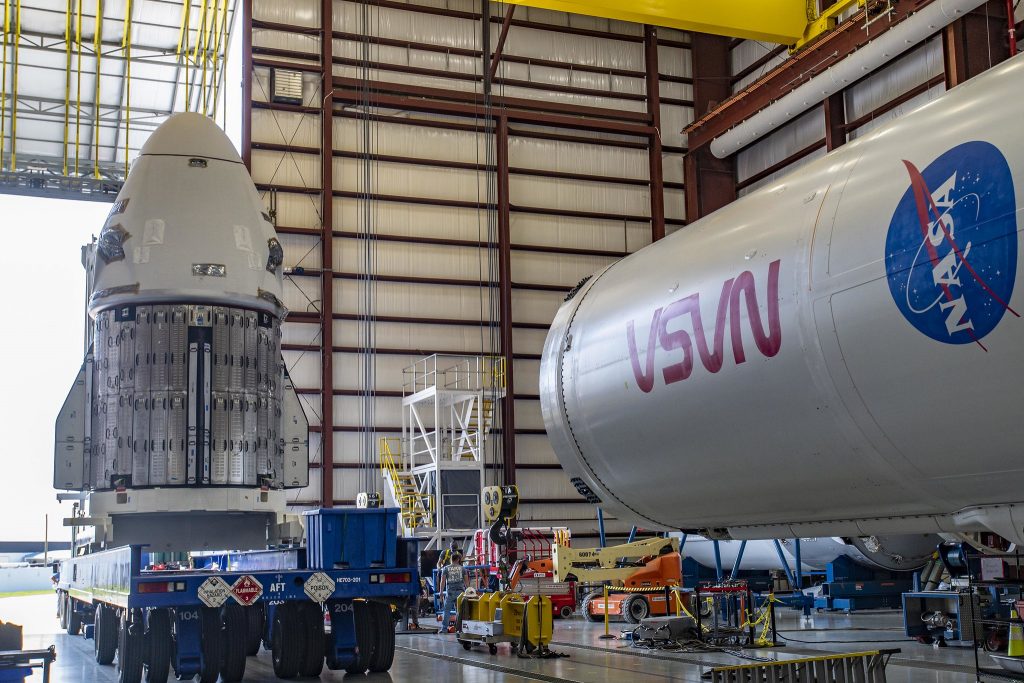
The Dragon Endurance spacecraft is currently mated to the Falcon 9 rocket and safely secured inside SpaceX’s hangar at Launch Complex 39A. Kennedy Space Center is also making preparations across the spaceport to secure other property and infrastructure. After the storm progresses, teams from NASA and SpaceX will evaluate the potential impacts to the center and determine whether to adjust the mission timeline further.
Undocking of the agency’s Crew-4 mission from the space station will move day-for-day along with the Crew-5 launch date to allow a planned five-day direct handover between crews.
The Crew-5 flight will carry NASA astronauts Nicole Mann and Josh Cassada, who will serve as mission commander and pilot, respectively, along with JAXA (Japan Aerospace Exploration Agency) astronaut Koichi Wakata, and Roscosmos cosmonaut Anna Kikina, who will serve as mission specialists.
The Commercial Crew Program support team at NASA’s Marshall Space Flight Center continues preparations and assessments for the Crew-5 mission. The team is integral to the certification and readiness of the Crew-5 flight, primarily for launch vehicle (Falcon 9), and provides engineering expertise for spacecraft (Dragon) propulsion and integrated performance.
“Our thoughts are with fellow team members down at Kennedy as they weather the storm,” said Lisa McCollum, manager of Marshall’s Commercial Crew Program support team. “In the meantime, our team at Marshall remains flexible, focused, and determined, with a shared commitment to the success and safety of the Crew-5 launch.”
Follow the Crew-5 blog for the latest information on the mission and weather impacts. Learn more about Crew-5 by exploring the Commercial Crew Press Kit.
Webb Images of Neptune, Mars Highlighted on ‘This Week at NASA’
The first image of Neptune from NASA’s James Webb Space Telescope is featured in “This Week @ NASA,” a weekly video program broadcast on NASA-TV and posted online.
Webb’s first image of Neptune includes the clearest view of Neptune’s rings since the images Voyager 2 captured during its 1989 flyby of the distant planet. Webb also captured seven of Neptune’s 14 known moons including Triton, which orbits Neptune in an unusual retrograde, or backward direction. Additional studies by Webb of both Triton and Neptune are planned in the coming year.
The program also highlights Webb using its infrared capability to capture its first images and spectra of Mars. Images of the planet’s eastern hemisphere captured by Webb’s Near-Infrared Camera show surface features, such as craters and dust layers, as well as thermal emission, or light given off by the planet as it loses heat. Meanwhile, data from the telescope’s first near-infrared spectrum of Mars could give astronomers additional details about the planet’s surface and about its atmosphere.
The Webb team at NASA’s Marshall Space Flight Center spent more than two decades working on Webb, primarily focusing on development and testing of the mirrors in extreme cold temperatures at which Webb operates.
View this and previous episodes at “This Week @NASA” on NASA’s YouTube page.



























